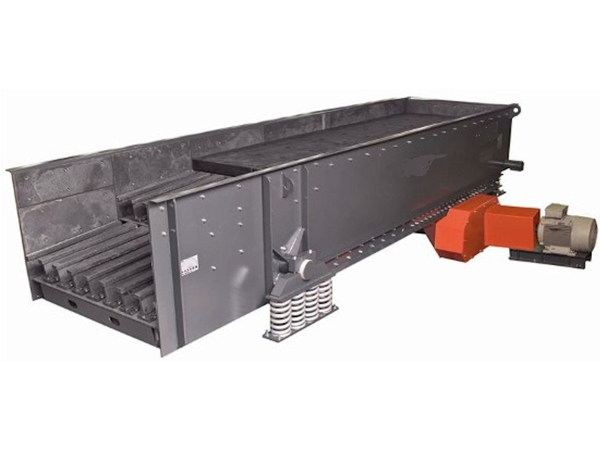A vibrating feeder is a device used to convey bulk materials or granular products through the use of vibrations. It consists of a vibrating tray or chute that is mounted on springs or other vibration isolators to facilitate smooth and controlled movement.
How does a vibrating feeder work

Vibration Generation: The vibrating feeder contains an electromagnet or other type of vibration source that generates periodic vibrations. This vibration is transmitted to the tray or chute, causing it to move in a controlled, linear motion.
Material Loading: Bulk materials or granular products are loaded onto the vibrating feeder tray or chute. The tray may have an inclined or flat surface, depending on the application requirements.
Vibration Transmission: As the vibrating feeder tray or chute vibrates, the material on top of it experiences a series of small jumps or movements. These vibrations help to dislodge any particles that may be stuck together or compacted, ensuring a consistent flow of material.
Flow Control: The rate of material flow is typically controlled by adjusting the amplitude or frequency of the vibrations. By increasing or decreasing the intensity of the vibrations, operators can regulate the amount of material being discharged from the feeder.
…
For more detailed information about the working principle of vibrating feeder, please click to visit: https://www.hsd-industry.com/news/working-principle-of-vibrating-feeder/


